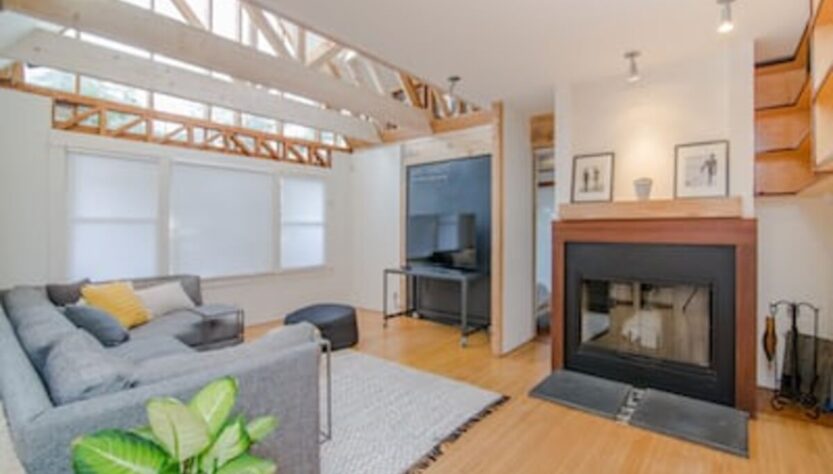Introduction
Minimalist design has become increasingly popular in the realm of home design and interior décor. Rooted in the philosophy of “less is more,” minimalist home design embraces simplicity, functionality, and an uncluttered aesthetic. In this article, we will delve into the rise of minimalist home design, its core principles, and the numerous benefits it offers homeowners seeking a serene, organized, and aesthetically pleasing living environment. Often, the Amazing fact about Living Room.
The Core Principles of Minimalist Home Design
1. Simplicity: Minimalist home design places a premium on simplicity, emphasizing the use of essential elements and a reduction of excess. It’s about stripping away non-essential decorations and furnishings to create clean, uncluttered spaces.
2. Functionality: Functionality is paramount in minimalist design. Every piece of furniture, decor item, or architectural feature should serve a practical purpose. The layout and design should enhance the functionality of the space.
3. Clean Lines and Shapes: Minimalist homes typically feature clean, straight lines, geometric shapes, and a sense of precision. This design approach contributes to a visually pleasing and harmonious composition.
4. Limited Color Palette: Neutral color palettes, such as whites, grays, blacks, and earthy tones, are often favored in minimalist designs. A limited color palette creates a sense of cohesion and tranquility.
5. Decluttered Spaces: Minimalist homes prioritize decluttering. Storage solutions are carefully considered to keep possessions out of sight, leaving surfaces free from unnecessary items.
6. Natural Light: Maximizing natural light is essential in minimalist design. Large windows, glass doors, and open layouts are standard features that flood the space with sunlight, creating a sense of openness.
The Benefits of Minimalist Home Design
1. Enhanced Serenity: Minimalist homes exude a sense of calm and serenity. The absence of clutter and visual noise allows residents to relax and recharge in a tranquil environment.
2. Efficient Use of Space: Minimalist design makes efficient use of available space. Every nook and cranny is utilized to its full potential, reducing wasted space and optimizing functionality.
3. Easy Maintenance: With fewer decorations and furnishings, minimalist homes are easier to clean and maintain. This is especially appealing for those with busy lifestyles.
4. Improved Focus: Minimalist design minimizes distractions, allowing residents to focus on essential aspects of life, whether it’s work, family, or personal pursuits.
5. Timeless Appeal: Minimalist homes have a timeless quality, as they rely on fundamental design principles rather than fleeting trends. This longevity ensures that minimalist interiors remain aesthetically pleasing over time.
6. Sustainability: By reducing the consumption of unnecessary items and emphasizing quality over quantity, minimalist design aligns with sustainability principles. It promotes conscious and eco-friendly living.
7. Customization Potential: Minimalist interiors provide a neutral canvas that allows for easy customization and personalization. Homeowners can add their unique touches to the space.
Applications of Minimalist Home Design
Minimalist home design can be applied to various aspects of residential living:
1. Interior Design: Minimalist interior design emphasizes open spaces, uncluttered layouts, and a focus on functional furnishings. It creates a sense of flow and cohesion throughout the home.
2. Architecture: Minimalist architecture emphasizes clean lines, efficient use of space, and integration of natural elements. It often incorporates sustainable building practices.
3. Furniture and Decor: Minimalist furniture and decor items feature simple designs, neutral colors, and a focus on functionality. They enhance the overall aesthetic while serving practical purposes.
4. Storage Solutions: Minimalist homes often feature creative storage solutions that help keep belongings organized and out of sight, contributing to a clutter-free environment.
Conclusion
The rise of minimalist home design reflects a growing preference for simplicity, functionality, and aesthetics that stand the test of time. By adhering to the core principles of minimalism, homeowners can create living spaces that are not only visually appealing but also serene, efficient, and sustainable. Whether in interior design, architecture, or home decor, the benefits of minimalist home design extend beyond aesthetics, promoting a lifestyle that values quality, purposeful living, and an uncluttered sense of home.
Read Also: The Role of Support Groups in Recovery: Benefits of Joining AA or NA
